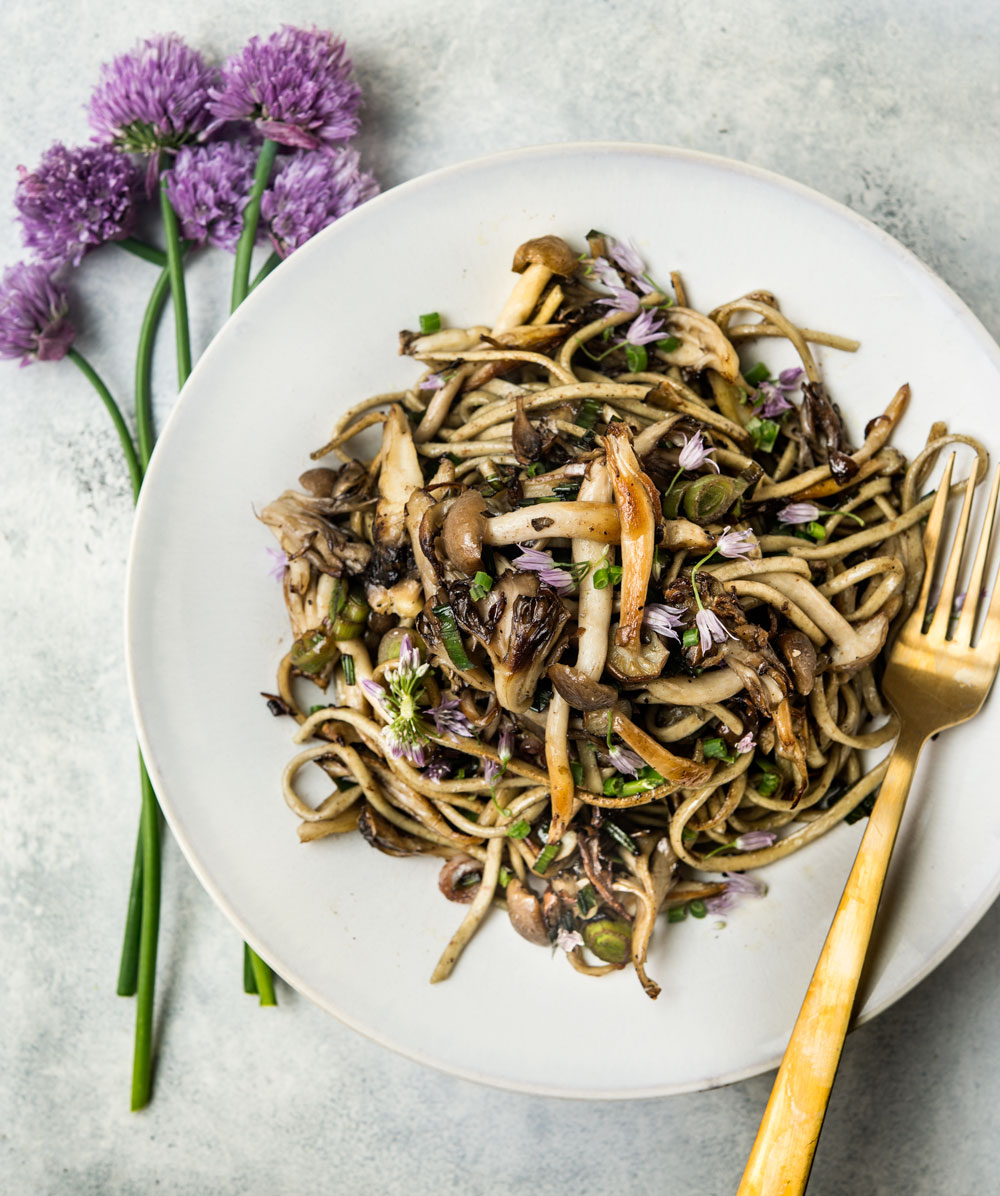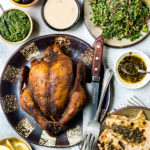I like an al dente noodle. One with a lot of chew.
When I was in Chicago a few weeks back, I had a delicious plate of chestnut noodles with mushrooms at Bad Hunter (Randolph Avenue in the West Loop). The chestnut noodles were pleasantly chewy. As well, the dish just happened to be vegan. And that got me thinking…
How does one achieve a really chewy noodle without the addition of eggs to the pasta dough? A week of pondering and excessive googling lead me to Ivan Ramen’s rye ramen noodles. The key to ramen noodles’ chewiness and springiness is kansui (aka lye water or alkaline salt), which regulates the acidity of the noodle dough. Could kansui be the answer? I have no idea if this is how Bad Hunter makes their chestnut noodles, but I was eager to give this process a try.
Kansui contains 80% sodium carbonate and 20% potassium carbonate, and is responsible for ramen noodles’ yellow color and springy mouthfeel.
For all you science nerds out there (like me), here’s what Lucky Peach says…
“By adding an alkaline component to noodle dough (i.e., kansui), the pH is increased significantly from a range of neutral 6–7 to a basic 9–11. As the pH rises above 9.0, natural yellow pigments in flavonoid compounds that are otherwise colorless at neutral pH are liberated, giving the noodles a characteristic golden hue. Alkalinity also encourages greater absorption of water in the flour, more starch degradation, and an increase in strength and extensibility. For this reason, flour with less protein (such as a garden-variety all-purpose) can still turn out an alkaline noodle with decent spring. The starch gel within the protein matrix is also strengthened, resulting in a firm, chewy bite. But beware, added in excess of the typical 1 percent, alkaline salts can lead to an undesirable slimy texture and soapy flavor.”
Since kansui is not so easy to find, you can substitute sodium bicarbonate or everyday baking soda.
“However, with a pH in solution around 8.0, baking soda is a fairly weak alkaline and will do little by itself to transform an otherwise pedestrian noodle into ramen. But one can transform sodium bi-carbonate into its chemical cousin sodium carbonate with a bit of time in the oven. The transformed “baked soda” has given up some of its water and carbon dioxide, resulting in an increase of pH to 11.0 or higher, becoming a favorite alternative for the ambitious, kansui-less amateur noodle maker.”
So let’s make some Ivan Ramen rye noodles. For these noodles you’ll need baking soda, a combination of flours (bread flour, cake flour, and rye flour) and water (next go around, I’m going to try this with chestnut flour instead of the rye). The process is similar to making other types of pasta (with the notable absence of eggs). All ingredients go into a stand mixer (so no kneading by hand), the dough is then allowed to rest before being rolled out. I used my chitarra to cut the noodles but you could cut by hand or with a pasta attachment. From there you could of course make ramen, but I decided to give my noodles a different twist.
I decided to use my homemade rye ramen noodles and incorporate a whole lot of spring, with the addition of green garlic, chive blossoms and a combination of mushrooms (maitake and beech, but I’ve also done it with shiitake, king trumpets, and oysters), and finished with a splash of sherry vinegar and walnut oil.
Delish, if I do say so myself!


I added a splash of my favorite sherry vinegar and finished the noodles with a drizzle of walnut oil and chive blossoms, the latter from my garden…


Rye Noodles with Mushrooms, Green Garlic, and Chive Blossoms
Serves 4
Extra virgin olive oil
Butter
1 1/4 to 1 1/2 pounds mixed mushrooms, sliced
1 pound rye noodles (recipe can be found here; I used an Italian chittara to cut my noodles. I wanted them rather thick, so I rolled each piece out to setting #4 on my KitchenAid Attachment, and then rolled it through the chittara)
2 to 3 stalks green garlic, thinly sliced
pinch red pepper flakes
Pasta water 1/4 cup to 1/2 cup
Splash good quality sherry vinegar
Drizzle of walnut oil
Chives or blossoms to garnish
Bring a pot of salted water to a boil.
Heat 1 tablespoon olive oil and 1 tablespoon butter in a large skillet. When hot, add the mushrooms (working in batches so not to crowd the pan), season with salt and pepper, and saute until golden brown. Remove the mushrooms and set aside. Repeat with the remaining mushrooms adding more olive oil and butter. Add the reserved mushrooms back to the pan. Add the green garlic, pinch of red pepper flakes, and saute another minute or two, until the green garlic is tender.
Drop your pasta in the boiling water. When the noodles are cooked about 80%, they’ll just need a minute or so, drain, reserving the pasta water. Add the noodles to the skillet with the mushrooms. Add 1/2 cup or so of pasta water, increase the heat to high, and cook another minute more, adding more pasta water as needed to coat the noodles. Add a drizzle of olive oil if the noodles look dry and toss. Add a splash of sherry vinegar. Remove from the heat.
Divide the pasta amongst plates. Drizzle with walnut oil and sprinkle with chive blossoms.








2 comments